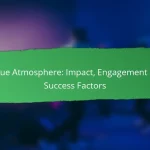Local music collaborations play a vital role in enhancing community engagement by connecting artists with their audiences and fostering a vibrant cultural scene. Through successful partnerships, these collaborations not only promote local talent but also create impactful experiences that resonate with diverse groups. By employing effective strategies such as clear communication and shared goals, artists can maximize their creative potential and strengthen community ties.
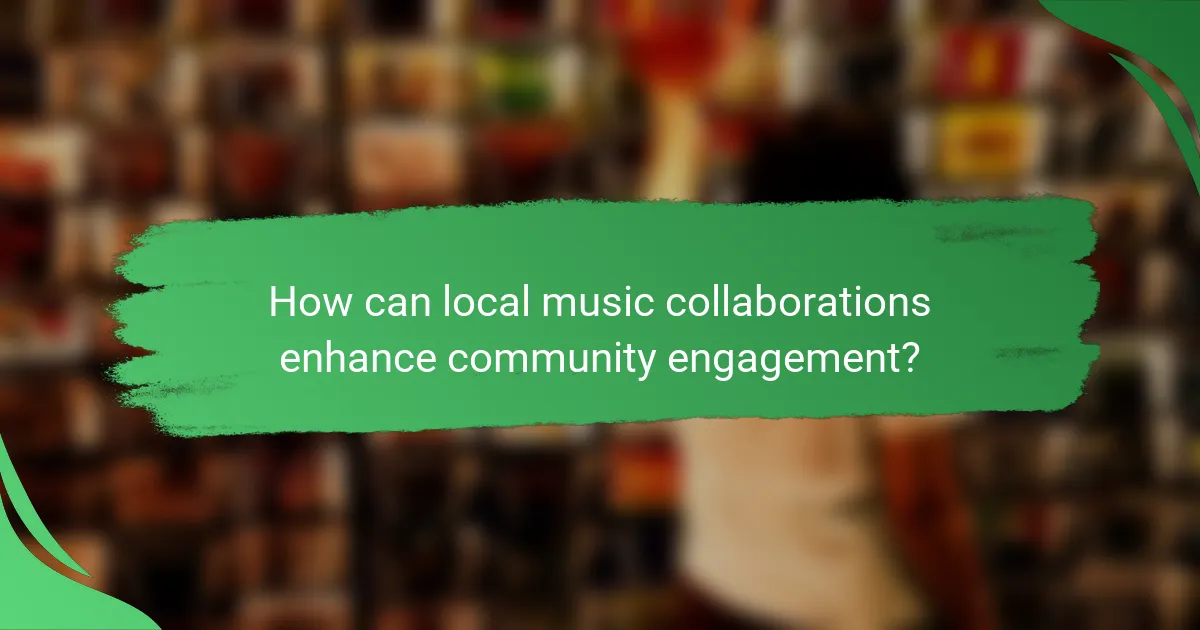
How can local music collaborations enhance community engagement?
Local music collaborations can significantly enhance community engagement by fostering connections among artists and their audiences. These partnerships create opportunities for shared experiences, bringing diverse groups together and strengthening local culture.
Increased local visibility
Collaborating with other musicians can boost an artist’s visibility within the community. By participating in joint performances or events, artists can reach wider audiences, often attracting fans who may not have been aware of their work previously.
For example, a local band might team up with a solo artist for a concert, drawing in fans from both followings. This cross-promotion can lead to increased attendance and greater recognition for all involved.
Strengthened artist networks
Local music collaborations help build strong networks among artists, which can lead to future opportunities. By working together, musicians can share resources, knowledge, and contacts, creating a supportive ecosystem that benefits everyone.
For instance, a group of musicians might form a collective to organize events, share rehearsal spaces, or collaborate on new projects. This sense of community can enhance creativity and innovation within the local music scene.
Enhanced cultural exchange
Collaborations often bring together artists from different backgrounds, promoting cultural exchange and understanding. This diversity can enrich the local music landscape, introducing new styles and influences that resonate with the community.
For example, a local hip-hop artist might collaborate with a traditional folk musician, blending genres and creating unique sounds that reflect the community’s multicultural identity. Such projects can foster appreciation for various musical traditions and encourage dialogue among different cultural groups.
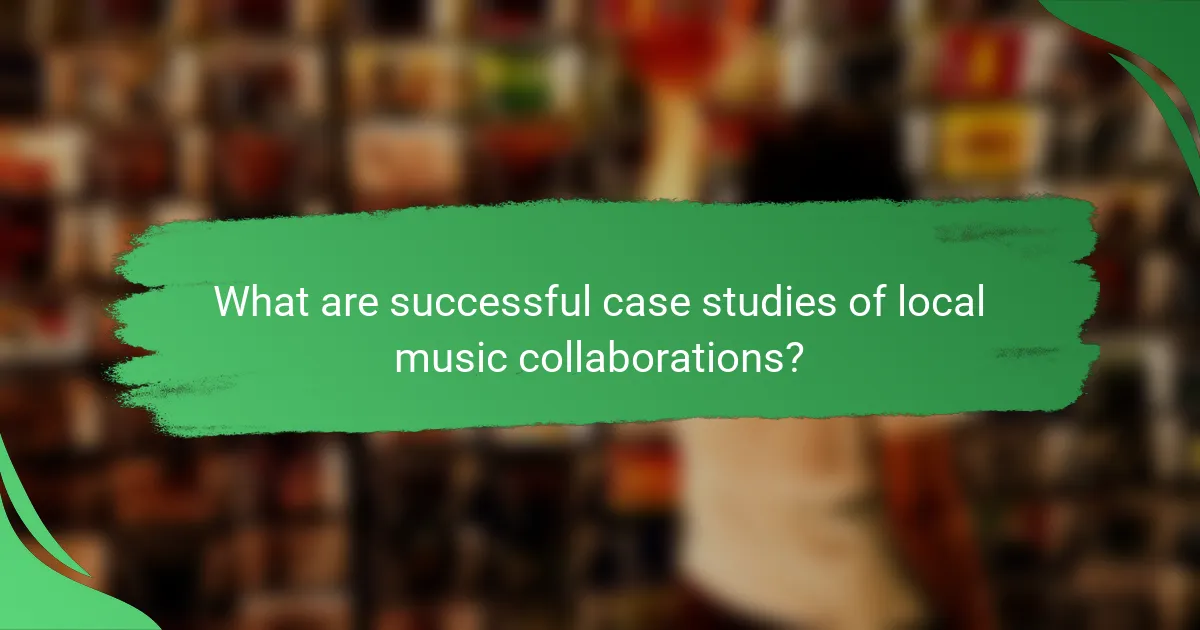
What are successful case studies of local music collaborations?
Successful case studies of local music collaborations demonstrate how artists and organizations can work together to create impactful music experiences. These collaborations often enhance community engagement, promote local talent, and foster creativity through shared resources and ideas.
Los Angeles: The Music Collective Project
The Music Collective Project in Los Angeles showcases how diverse artists can unite to produce innovative music. This initiative encourages collaboration among musicians from various genres, allowing them to share their unique styles and influences.
Participants typically engage in workshops and jam sessions, leading to the creation of original tracks that reflect the collective’s diverse backgrounds. This project not only enhances artistic growth but also builds a supportive community among local musicians.
Nashville: The Songwriters’ Round
Nashville’s Songwriters’ Round is a renowned format where multiple songwriters perform their original songs in a shared setting. This collaboration allows artists to showcase their work while receiving immediate feedback from peers and audiences.
Typically held in intimate venues, these rounds foster a sense of camaraderie and inspire creativity. Songwriters often share stories behind their songs, which enhances the audience’s connection to the music and promotes networking among artists.
New York: Collaborative Music Festivals
New York hosts various collaborative music festivals that bring together artists from different genres and backgrounds. These festivals provide a platform for musicians to perform together, often resulting in unique, one-time-only collaborations.
Attendees benefit from experiencing a wide range of musical styles and discovering new artists. Organizers should focus on creating inclusive environments that encourage participation and interaction, ensuring that both performers and audiences feel engaged and valued.
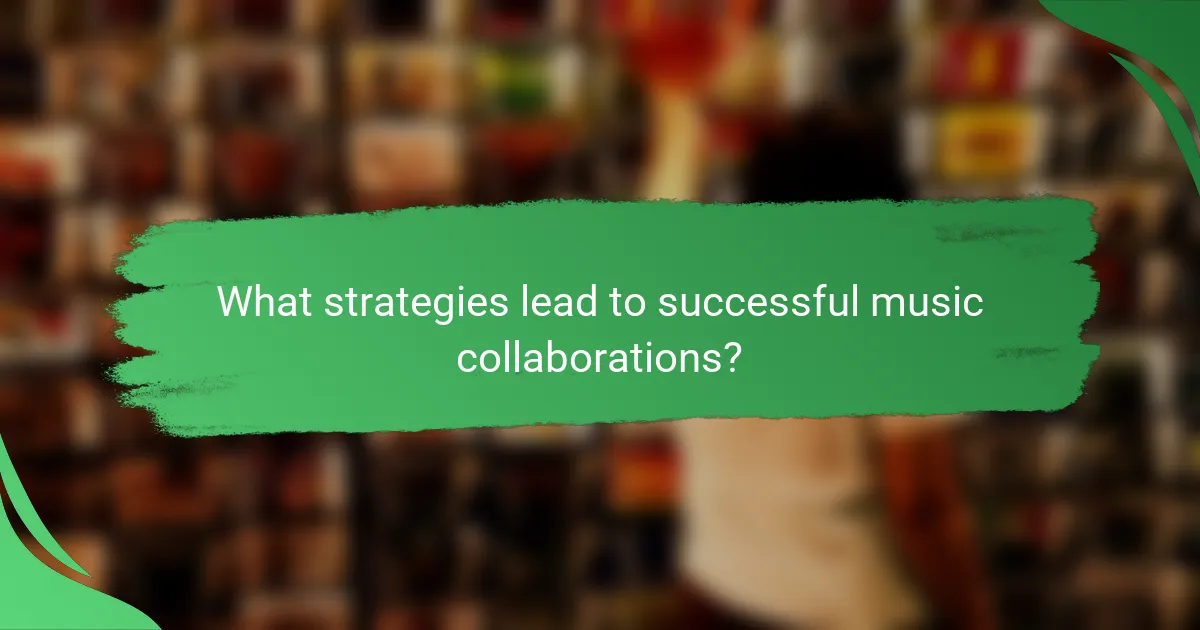
What strategies lead to successful music collaborations?
Successful music collaborations hinge on effective strategies that foster creativity and alignment among artists. Key approaches include establishing clear communication, defining shared goals, and utilizing social media effectively.
Clear communication channels
Establishing clear communication channels is vital for any music collaboration. This can involve regular meetings, dedicated messaging platforms, or project management tools to streamline discussions and feedback. Ensuring everyone is on the same page minimizes misunderstandings and enhances the creative process.
Consider using tools like Slack or Discord for real-time communication, which can help maintain an open dialogue. Regular check-ins can also keep the project on track and allow for adjustments based on collective input.
Shared goals and vision
Having shared goals and a unified vision is essential for successful music collaborations. Artists should discuss their objectives upfront, whether it’s creating a specific genre of music, reaching a target audience, or achieving a particular sound. This alignment helps guide creative decisions and keeps the collaboration focused.
To facilitate this, artists can create a collaborative document outlining their goals and vision. This can serve as a reference point throughout the project, ensuring that all contributors remain aligned and motivated.
Leveraging social media
Leveraging social media is a powerful strategy for promoting music collaborations and engaging with audiences. Artists can use platforms like Instagram, TikTok, and Facebook to share behind-the-scenes content, teasers, and updates, which can generate excitement and anticipation for the final product.
Additionally, collaborating on social media can expand reach. Artists should consider cross-promoting each other’s profiles and using relevant hashtags to tap into wider audiences. Engaging with fans through live sessions or Q&As can also strengthen community ties and enhance visibility.

How do local music collaborations impact sales for artists?
Local music collaborations significantly enhance sales for artists by expanding their reach and creating new revenue streams. These partnerships often lead to increased visibility, which translates into higher merchandise, streaming, and ticket sales.
Increased merchandise sales
Collaborating with other local artists can drive merchandise sales by tapping into each other’s fan bases. When fans see their favorite artists working together, they are more likely to purchase collaborative merchandise, such as limited edition items or joint branding products.
For example, a local band might collaborate with a visual artist to create unique T-shirts or posters. This not only attracts existing fans but also draws in new customers who appreciate the combined talents, potentially increasing merchandise sales by 20-30% during the collaboration period.
Boosted streaming numbers
Collaborations often lead to a surge in streaming numbers as artists cross-promote their music to different audiences. When two artists release a joint track, they can share it across their social media platforms, significantly enhancing its reach.
Streaming platforms like Spotify and Apple Music also favor collaborative tracks in their playlists, which can lead to increased visibility. Artists can see their streaming numbers rise by 50% or more in the weeks following a collaboration, depending on their combined fan engagement.
Enhanced ticket sales for events
Joint performances or events featuring collaborating artists can lead to higher ticket sales. Fans are more likely to attend shows that feature multiple acts they enjoy, creating a more appealing event experience.
For instance, a local music festival featuring collaborations between popular artists can sell out quickly, with ticket sales potentially increasing by 40-60% compared to solo performances. Artists should consider bundling tickets for collaborative shows to maximize attendance and revenue.
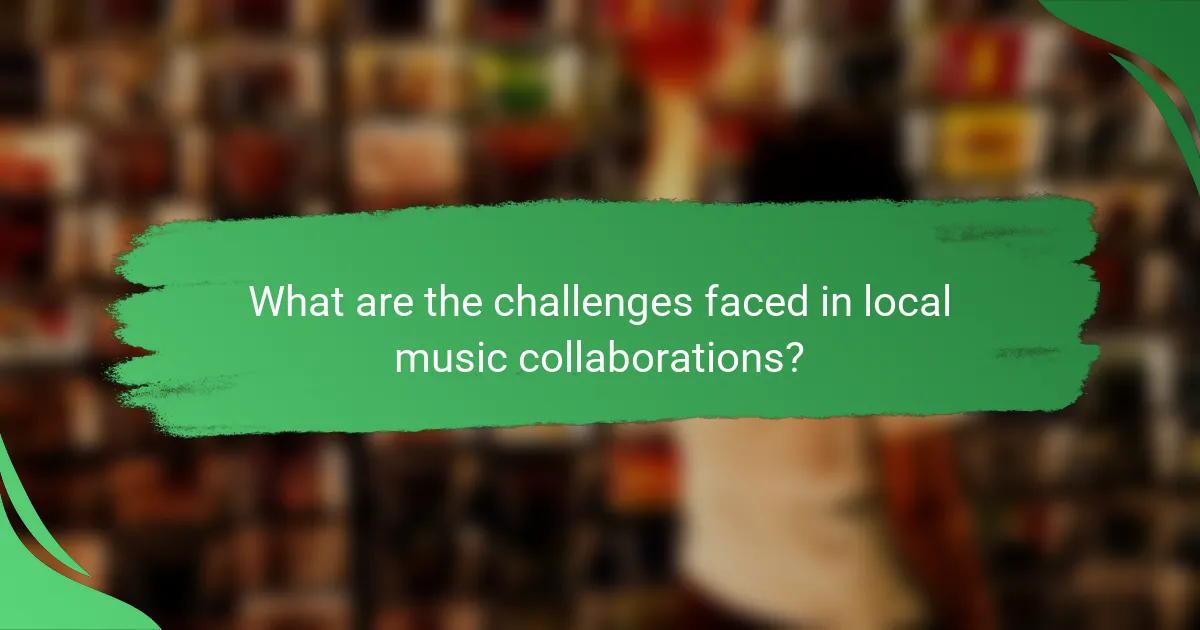
What are the challenges faced in local music collaborations?
Local music collaborations often encounter several challenges that can hinder their success. Key issues include resource allocation, creative differences among artists, and logistical coordination, each requiring careful management to ensure a fruitful partnership.
Resource allocation issues
Resource allocation is a critical challenge in local music collaborations, as artists must share limited financial, time, and material resources. Budget constraints can lead to conflicts over funding for studio time, marketing, and promotional activities.
To mitigate these issues, collaborators should establish a clear budget and agree on how resources will be distributed. This might involve creating a detailed plan that outlines each party’s contributions and responsibilities, ensuring transparency and accountability.
Creative differences among artists
Creative differences can arise when artists have varying visions, styles, or approaches to music. These differences can lead to tension and hinder the collaborative process if not addressed properly.
To navigate creative disagreements, open communication is essential. Regular meetings to discuss ideas and feedback can help align artistic goals. Establishing a shared vision at the outset can also facilitate smoother collaboration.
Logistical coordination
Logistical coordination is another significant challenge, as local music collaborations often involve multiple schedules, venues, and equipment needs. Miscommunication about rehearsal times, performance locations, or equipment sharing can lead to missed opportunities.
Using collaborative tools like shared calendars and project management apps can streamline coordination. Setting clear timelines and deadlines for tasks can also help keep everyone on track and ensure that all logistical aspects are managed effectively.
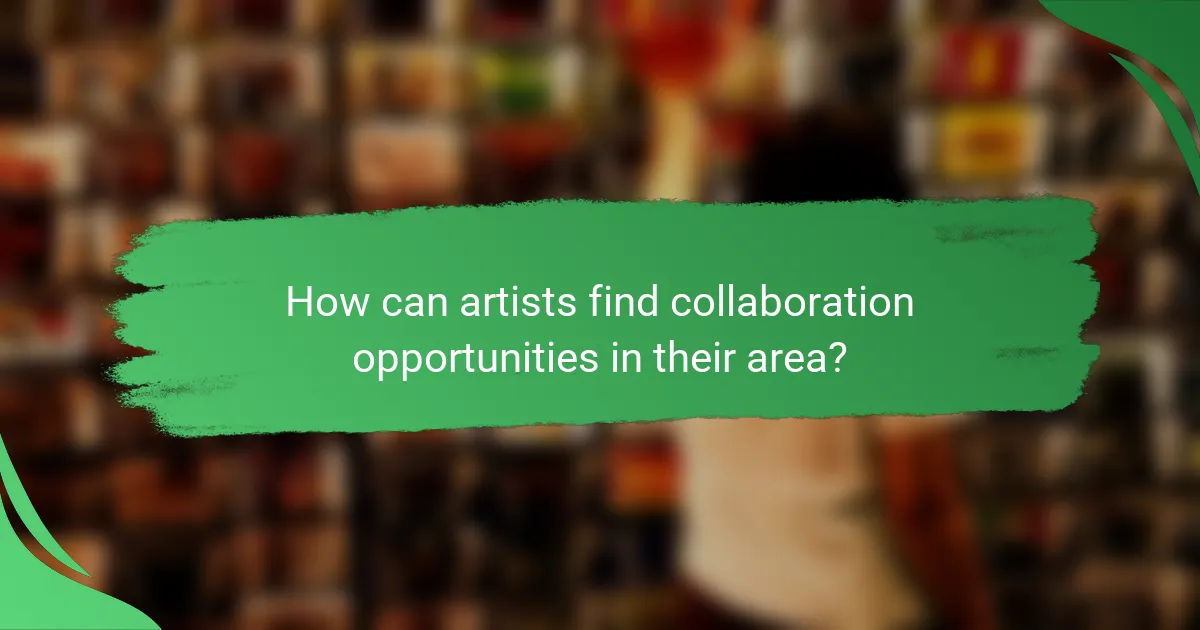
How can artists find collaboration opportunities in their area?
Artists can find collaboration opportunities by engaging with local music communities and leveraging various platforms that connect musicians. Networking and participating in events are effective strategies to discover potential partners and projects.
Utilizing local music networks
Local music networks, such as community groups, online forums, and social media platforms, serve as valuable resources for artists seeking collaboration. Joining platforms like Meetup or Facebook groups dedicated to local musicians can help artists connect with others in their area.
Additionally, many cities have music collectives or co-ops that facilitate collaboration among artists. These networks often host workshops, jam sessions, and showcases, providing opportunities for musicians to meet and collaborate on projects.
Participating in community events
Community events, such as open mics, festivals, and music fairs, are excellent venues for artists to showcase their work and meet potential collaborators. Attending these events allows musicians to network in a relaxed environment while gaining exposure.
Artists should consider volunteering at local music events or festivals, as this can lead to connections with other performers and industry professionals. Engaging with the local music scene not only enhances visibility but also fosters a sense of community among artists.

